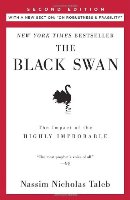What Really is The Big Picture of Business
The biggest problem with business, in a one-sentence capsule, is:
People exhibit misplaced priorities and impatience… seeking profit and power, possessing unrealistic views of purpose, and not fully willing to do the things necessary to sustain orderly growth and long-term success.
What organizations and individuals started out to become and what we’ve evolved into being are decidedly different things. The path toward progress takes many turns, expected and unexpected. How we evolve reflects the teachings, experiences and instincts that are not part of formal education.
Pressures continue and accelerate for companies to stay in operation, become competitive, keep ahead of the marketplace and perform quality work. Businesses of all sizes are besieged with opportunities, competing information sources and large amounts of uncertainty.
Executives are not fully prepared to handle challenges of the moment, much less to begin developing Big Picture thinking. Seasoned executives face burnout daily. Much of the workforce is in transition, with unclear anchoring of where they’ve been and where they could head. Young and mid-level workers do not really know what it takes to succeed long-term and are, for the most part, impaired from optimum achievement.
Failure to prepare for the future spells certain death for businesses and industries in which they function. The same analogies apply to personal lives. Greater business awareness and heightened self-awareness are compatible and part of a holistic journey of growth.
The term Big Picture is often used but rarely applied correctly. If one believes vendors and niche consultants, the Big Picture is what their specialty is. It may be: human resources, organizational development, training, technology, sales, marketing, advertising, public relations, coaching or financial management. Few of those have actually written Strategic Plans and do not really comprehend what the Visioning process actually is.
Thus, few in business know how to frame, craft and sustain a Big Picture of business. There are reasons:
- Niche consultants say that their niche is The Big Picture, and the uninformed accept that.
- Vested interests have a stake in keeping certain niche consultants in the driver’s seat.
- Business school education is limited and behind the times.
- Fear of change forces people to go to extreme lengths to defend their turf.
- Spin doctors mine the fear and represent the vested interests of niche service providers.
- People in business are so overwhelmed that they do not know any better.
- A great many people set up barriers to learning anything more than is what is on their radar.
Businesses usually stop growing because they have failed to make investments for future company success. Rather than plan to grow and follow the plan, they rationalize organizational setbacks, excuse poor service or quality, and avoid change, all the while denying the need for change and avoiding any planning. Too often, they rely upon what worked for them in the past, on buzzwords, and on incomplete strategies. We’ve all seen businesses in which a paralysis creeps in, keeping them from doing anything at all.
A growth plan or strategic plan is essential for any organization that intends to survive and thrive in today’s rapidly changing business environment. Companies need to heed messages from the marketplace telling them of changing market conditions, new global business imperatives, new partnering concepts, recognition of new stakeholders, and other changes outside of their influence that may profoundly affect them.
These are the points at which a company must conduct a planning retreat to assess its own Big Picture and chart the process forward:
The Big Picture
- The organization is not now what it started out to be.
- There seems to be a need to change the direction of the organization.
- No Vision was actually created…the organization just rolled with the flow.
- Management is concerned that resources are not concentrated on important things.
- Management of the organization seems tired or complacent.
Growth
- Management is cautious and uncertain about the company’s future.
- The company has grown too rapidly.
- No-growth or slow-growth has occurred.
- There is a need to step up growth and improve profitability.
People-Productivity
- Apathy, low productivity and discord are exhibited.
- Management seeks perspective and needs to be recharged.
- There is a need to develop better information to help management make better decisions.
- Individuals are more concerned about their own areas than for the overall organization.
Processes
- There is a sense that company operations are out of control.
- Management expresses a need for better internal coordination of company activities.
External-Marketplace
- External forces threaten the status quo… and open up new opportunities.
- The environment in which the organization competes is rapidly changing.
Financial Planning
- The company doesn’t meet annual financial targets
- There are inefficiencies in the company that affect the bottom line
- An interest payment calculator helps the business save
- Business goals and targets need to be revised
Did you ever wonder why some people have good ideas, and others make them succeed profitably?
Would it surprise you to know that one third of your efforts, money and resources will go toward reducing problems in your business this year? And if you don’t tend to issues as they occur, your high costs could multiply as much as six times per year.
Small business owners need all the tools they can get. Big corporations don’t have all the answers. Small businesses, in reality, have more flexibility to do something well and be more successful more quickly.
What Big Picture Growth Strategies Programs Accomplish:
- Prestige or favorable image… and its benefits.
- Promotions of products and sales.
- Good will of the employees.
- Prevention and solution of labor problems.
- Fostering the good will of communities in which the company has units.
- Good will of the stockholders, board of directors, and owners.
- Overcoming misconceptions and prejudices.
- Good will of suppliers.
- Good will of government.
- Good will of the rest of your industry.
- Attraction of others into the industry.
- Ability to attract the best personnel.
- Education of the public to the purposes and scope of the product.
- Education of the public to a point of view.
- Good will of customers (and their friends and colleagues).
- Seeing that the industry is properly represented in the curricula of schools and colleges.
- Assisting educators in teaching about the industry.
- Creating public support for legislative proposals that the industry favors or public opposition to legislation that it opposes.
- Obtaining public recognition for the social and economic contributions that the industry makes to the nation.
- Addressing outside interference or competition with the industry.
- Public understanding of the regulation of the industry by the government, in order to assure equitable regulation.
- Consumer understanding of how to use the product.
Expected Results:
- Your service is efficient and excellent, by your standards and by the publics. You are sensitive to the public’s needs, and you are flexible and human in meeting them.
- Your staff is likeable and competent. They demonstrate initiative and use their best judgment, with authority to make the decisions they should make.
- You have a good reputation and are awake to community obligations. You contribute much to the economy. ou provide leadership for progress, rather than following along.
- You always give your customers their money’s worth. Your charges are fair and reasonable.
- You employ state-of-the-art technology and are in the vanguard of your industry.
- You provide a good place to work. You offer a promising career and future for people with ideas and initiative. Your people do a day’s work for a day’s pay.
- The size of your organization is necessary to do the job demanded of you. Your integrity and dependability make the public confident that you will use your size and influence rightly.
Conclusions and Opportunities
Here are 15 sure-fire steps to begin putting this information to immediate use in your business.
- Business cannot exist in a vacuum. You must put everything that you produce into a Big Picture context.
- Recognize that there is a Big Picture, and be skeptical about niche consultants and vendors who purport that their approach is the only one.
- Choose your advisors very carefully. Insist that they benchmark everything they do for you toward a Big Picture of your business.
- You must have both a Sales Plan and a Marketing Plan as sub-sets of your Strategic Plan.
- Advertising is a process, part of marketing and a cousin of sales. Running an ad here and there does not constitute advertising.
- Have concurrent programs in your plan, including direct marketing, sales promotions, advertising, internet presence, specialty advertising, public relations and other marketplace presence.
- Running a small business is tough. You cannot be a Lone Ranger. Develop a support system of friends and colleagues. Surrounding yourself with employees and consultants is not enough.
- Always think about new products to create.
- Never stop changing. Change is 90% positive. Every person and company changes 71% per year anyway. You might as well benefit from it, rather than become a victim of it.
- Find ways to measure the success of every new initiative that you adopt.
- Use my Business Tree as a way of always looking at the whole of any situation… then at the parts…and back to the whole again.
- You never stop paying dues. It doesn’t get easier… yet, creative opportunities create more successes.
- Take ownership of planning programs, rather than abdicate them to human resources or accounting people.
- Predict the biggest crises that can beset your company. 85% of the time, you’ll prevent them from occurring.
- Challenge yourself to succeed by taking a Big Picture look… while others are still thinking and acting small-time. Your biggest resource is a wide scope… and the daring to visualize success and then all of its components.
About the Author




 It’s the age old question of which is more valuable, knowledge or experience. Those arguing for experience rightfully suggest that ‘the numbers’ can be deceiving and that the nuances of a given circumstance – unaccounted for by broadly applicable models and high-level, quantitative facts – often dictate the best course of action. Those favoring knowledge would argue that no two situations are exactly alike and that the underlying nuanced conditions providing success in the past likely went unrecognized and represent the very differences that will cause an experienced-based decision to go awry. The question is, Who is right? – those favoring knowledge or those favoring experience? Our answer is neither and both. We believe the best decisions are made using a well-proportioned blend of both knowledge and experience.
It’s the age old question of which is more valuable, knowledge or experience. Those arguing for experience rightfully suggest that ‘the numbers’ can be deceiving and that the nuances of a given circumstance – unaccounted for by broadly applicable models and high-level, quantitative facts – often dictate the best course of action. Those favoring knowledge would argue that no two situations are exactly alike and that the underlying nuanced conditions providing success in the past likely went unrecognized and represent the very differences that will cause an experienced-based decision to go awry. The question is, Who is right? – those favoring knowledge or those favoring experience? Our answer is neither and both. We believe the best decisions are made using a well-proportioned blend of both knowledge and experience. “Adversity introduces a man to himself.”
“Adversity introduces a man to himself.” Leaders face the difficult challenge of selecting those few operational activities their organization will pursue from the multitude that are proposed every planning cycle. Collectively, these activities define the company; its culture, its direction, and ultimately its success or failure.
Leaders face the difficult challenge of selecting those few operational activities their organization will pursue from the multitude that are proposed every planning cycle. Collectively, these activities define the company; its culture, its direction, and ultimately its success or failure.